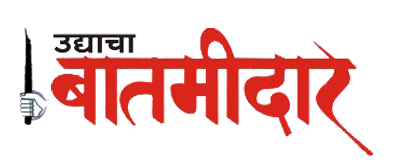 नोटाबंदीचा मोठा फटका उद्योगांना बसला.त्याचा थेट परिणाम कामगार कपातीवर झाला किंवा होत आहे.माध्यमांत असं नाही.नोटाबंदीनंतरही अनेक मिडिया हाऊसेसच्या महसुलात वाढ झाल्याचे आकडे समोर येताहेत.तरीही मिडियात मोठ्या प्रमाणावर कर्मचारी कपात सुरू आहे.काल पर्यंत सुस्थितीत असलेले अनेक संपादक आणि पत्रकार आज रस्त्यावर आल्याचं चित्र आहे.अचानक हे का होतंय? तर त्यामागं सुप्रिम कोर्टाच्या आदेशानंतर जी वेतनवाढ पत्रकार आणि पत्रकारेतर कर्मचार्यांना द्यावी लागत आहे ती द्यायला लागू नये यासाठी ही कपात चालू आहे.अनेक मिडिया समुहांनी आपल्या आवृत्या बंद करून पत्रकारांना रस्त्यावर आणलंय तर कित्येकांनी व्हीआरएसच्या गोंडस नावाखाली पत्रकारांच्या नोकर्या खाल्ल्लया आहेत.हिंदु आणि पीटीआयमध्येही आता या व्हिआरएस योजना वेगवेगळ्या गोंडस नावाखाळी लावल्या गेल्या आहेत.एका बाजुला प्रिन्टचा खप वाढतो आहे,अद्याप भारतात डिजिटल युग यायला अवधी लागणार असताना प्रिन्टला हळूहळू टाळे लावले जात असेल तर ते केवळ आणि केवळ पत्रकारांना पगार वाढ द्यायला लागू नये यासाठी.या विरोधात आता आवाज व्यक्त व्हायला लागला आहे.ही नोकरकपात कशी चालू आहे त्याची कारणमीमांसा करणारा हा लेख , मालकांच्या दडपशाहीची पोलखोल कऱणारा आणि सर्वांच्या डोळ्यात अंजन घालणारा..
नोटाबंदीचा मोठा फटका उद्योगांना बसला.त्याचा थेट परिणाम कामगार कपातीवर झाला किंवा होत आहे.माध्यमांत असं नाही.नोटाबंदीनंतरही अनेक मिडिया हाऊसेसच्या महसुलात वाढ झाल्याचे आकडे समोर येताहेत.तरीही मिडियात मोठ्या प्रमाणावर कर्मचारी कपात सुरू आहे.काल पर्यंत सुस्थितीत असलेले अनेक संपादक आणि पत्रकार आज रस्त्यावर आल्याचं चित्र आहे.अचानक हे का होतंय? तर त्यामागं सुप्रिम कोर्टाच्या आदेशानंतर जी वेतनवाढ पत्रकार आणि पत्रकारेतर कर्मचार्यांना द्यावी लागत आहे ती द्यायला लागू नये यासाठी ही कपात चालू आहे.अनेक मिडिया समुहांनी आपल्या आवृत्या बंद करून पत्रकारांना रस्त्यावर आणलंय तर कित्येकांनी व्हीआरएसच्या गोंडस नावाखाली पत्रकारांच्या नोकर्या खाल्ल्लया आहेत.हिंदु आणि पीटीआयमध्येही आता या व्हिआरएस योजना वेगवेगळ्या गोंडस नावाखाळी लावल्या गेल्या आहेत.एका बाजुला प्रिन्टचा खप वाढतो आहे,अद्याप भारतात डिजिटल युग यायला अवधी लागणार असताना प्रिन्टला हळूहळू टाळे लावले जात असेल तर ते केवळ आणि केवळ पत्रकारांना पगार वाढ द्यायला लागू नये यासाठी.या विरोधात आता आवाज व्यक्त व्हायला लागला आहे.ही नोकरकपात कशी चालू आहे त्याची कारणमीमांसा करणारा हा लेख , मालकांच्या दडपशाहीची पोलखोल कऱणारा आणि सर्वांच्या डोळ्यात अंजन घालणारा..Newspapers are cutting jobs in India to bypass mandatory wages, directed by the Supreme Court. Suruchi Mazumdar who teaches journalism in O P Jindal Global University takes a deep dive at why are journalists suddenly losing jobs in India’s growing print sector?
In February this year, Biswajit Roy, a special correspondent with The Telegraph, eastern India’s leading English language daily newspaper, was asked by the management to submit his resignation with immediate effect in the city of Kolkata. Mr. Roy is one of India’s print journalists who have been laid off en masse in recent months.
The print sector continues to expand in India hand in hand with the digital in contrast to the survival crisis of newspapers in the US and the UK.
But The Telegraph, the Bengali daily Anandabazar Patrika and another English daily Hindustan Times scrapped departments, shelved editions and folded bureaus in multiple Indian cities early this year. This is despite an upward surge in their revenues.
Several hundreds of print journalists were affected by the mass layoffs, said the International Federation of Journalists in a latest report.
Job losses in newspapers have been common in many parts of the world over the past decade as the income from advertising diminished.
But, in India the newspapers’ earnings from advertisements continue to grow.
The print and publishing business of HT Media Ltd., the owners of the Hindustan Times and the Hindi daily Hindustan, for instance, saw a 9 per cent surge in advertising revenues in 2016, as declared in the group’s latest annual report. The print and publishing business increased overall by 8 per cent.
Newspapers in India are cutting jobs to circumvent mandatory new wages, recommended by a statutory wage board, said MJ Pandey, general secretary of the Mumbai-based Brihanmumbai Union of Journalists (BUJ), one of India’s oldest trade unions.
Job cuts for mandatory wages
In June this year, the Supreme Court, India’s highest court, delivered a judgement on contempt petitions filed by journalists and unions against employers for defying a court order and for faltering on the payment of a wage board award, popularly called Majithia Wage Board, after Justice GS Majithia.
“The company owes us over Rs 48 lakh (74424 USD) in wages and arrears since 2011,” said Soumen Datta, a former special correspondent with the Hindustan Times in Kolkata. Mr. Datta lost his job in January this year.
The latest judgement directed newspapers to fully implement the recommendations of the Majithia wage board but contempt charges against the management were dismissed.
“Since 2014 print journalists have often been transferred to the newspapers’ digital operations to evade the wage board,” said Mr Pandey.
The statutory board covered only print journalists including those working under short-term contracts with newspapers. The recommendations were approved by India’s union cabinet in 2011.
“Many journalists were forced to submit resignations,” Mr. Pandey added.
Demonetisation as a leverage for job cuts
Journalists and unions said that since November last year the central government’s controversial economic policies of demonetisation gave a push to the management’s retrenchment policy.
Prime minister Narendra Modi overnight banned high denominator currency notes in November with the intention of curbing corruption and black money, a highly emotive issue in India. This was often stated as a reason by the management to wind up print operations.
“The policy of demonetisation was implemented in the third quarter of 2016,” said Sharad Saxena, executive director, operations and human resources, HT Media Ltd, in an email interview.
The Hindustan Times shelved editions and ceased operations in cities like Kolkata, Bhopal, Indore and Kanpur in January.
“This (print) is not a sunrise industry. One has to focus and strengthen stronger markets,” he added.
But media observers said that demonetisation was not the real reason behind the job losses even though this economic policy could have triggered a temporary slump in the advertising revenues.
Newspapers are not in any form of financial crisis due to demonetisation, said Mr. Pandey.
The owners of the Hindustan Times, for instance, witnessed a 10 per cent growth in consolidated revenues in 2016.
The Hindustan Times amalgamated its desk and reporting functions with that of Mint, a business daily published by HT Media, primarily to avoid paying mandatory wages to a huge staff, said Sevanti Ninan, media critic and editor of the media watchdog website, The Hoot.
“The wage board covers non-journalists as well. It is seen as affecting the media groups’ long-term viability,” said Ms Ninan.
The Supreme Court upheld the recommendations of the statutory wage board in a 2014-order after they were challenged by the ABP Pvt. Ltd., the publisher of the Bengali Anandabazar Patrika and The Telegraph and a leading media conglomerate, and Bennett Coleman and Co. Ltd., the publisher of the country’s largest-selling English daily The Times of India.
Change of guard
Media reports said that the ABP group streamlined staff cost and scrapped supplements and pull-outs in New Delhi and Kolkata after editor Aveek Sarkar stepped down in June last year. The new management, led by Sarkar’s younger brother Arup, is said to have a different style of working.
Like most leading newspaper groups in India, the ABP is run by a family – the Sarkars.
The change in top leadership happened after the state’s ruling party Trinamul Congress returned to power with a thumping victory in last year’s assembly elections. The ABP’s media properties allegedly ran a negative campaign against the state’s maverick chief minister Mamata Banerjee and her party.
Shiuli Biswas, associate vice president, human resources of the ABP group, refused to comment on the issue when contacted on telephone.
“The group certainly lost out on state government advertisements as it fell afoul of the ruling party,” said Ms. Ninan.
“There are too many media houses in India, unsustainable by the available advertising. Freelance work is increasingly available for journalists in digital start-ups,” she added.
But the upcoming digital news platforms are not to replace India’s legacy media in the near future. Though a battalion of casual workers might soon substitute journalists in traditional print and broadcast, it raises fundamental concerns of a free media.
 |
Click here to Reply or Forward
|
12.11 GB (80%) of 15 GB used
(Visited 407 time, 1 visit today)















